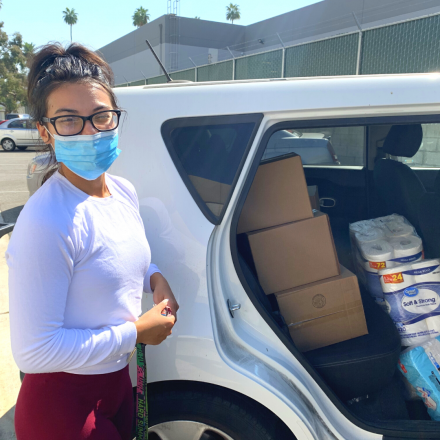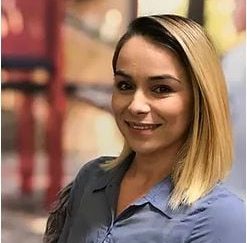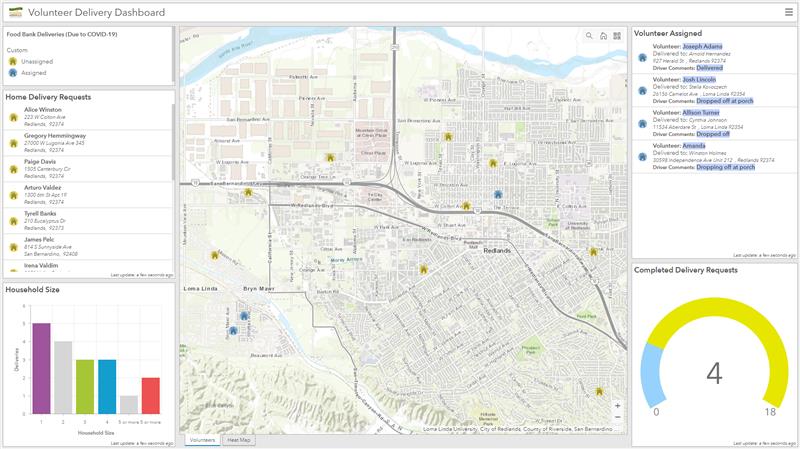At food banks across the US, COVID-19 has added to their challenges. These organizations have seen a shifting landscape, with food suppliers in limbo, volunteer support scaled back, and a massive increase in food support needs. Workflows are continually evolving due to COVID-19, and it is often challenging for food banks to identify new solutions. Working with limited in-person staff, as well as a huge increase in food needs, has shifted organizational priorities and limited their resources.
One local Feeding America hit particularly hard by growing food insecurity was the Inland Empire (IE), a sprawling metropolis representing San Bernardino and Riverside County, just East of Los Angeles. In 2019, Feeding America Riverside-San Bernardino (FARSB) served 18 million meals. Since the pandemic, they have seen a 60% increase in food needs across the community.

Pandemic brings new challenges
With a dangerous pandemic on the doorstep of FARSB’s many elderly and immunocompromised constituents, driving to food pantries was not always an option. The organization needed to rapidly scale its home delivery program. The home delivery program allows for the most vulnerable community members such as families without a car, elderly, or immunocompromised, to receive food right at their door. Home delivery requests, which used to be completed for 1 or 2 people per week, was now up to 50 or 60 requests per week.
That’s when Vanesa Mercado, operations manager for FARSB, mobilized the Hunger Heros Program, or Homebound Emergency Relief Outreach. The program operationalized the food banks’ large network of volunteers to find and deliver food to their neighbors. Volunteers signed up through the FARSB Website and were then placed on an email list. Each day they would receive a spreadsheet of new food requests, and assign themselves to deliver. Once complete, the volunteers would use the spreadsheet to update their delivery. Mercado created new spreadsheets by hand each day and had no clear way to track progress.
It was a huge logistical challenge, Mercado says. “It was very administrative intensive. Even then, volunteers were struggling with our system with lots of spreadsheets”. Pairing volunteers with those in need, giving instructions on how to pick up and deliver food was all in addition to the mountain of responsibilities placed on staff during COVID-19.
A solution, designed
Amanda Stanko works at Esri as a solution engineer. Stanko has been volunteering with the Inland Empire Food Bank for two years. She wanted to get involved and put “GIS” As a special skill in her volunteer form. She’s been working with Mercado’s team ever since. “We all started brainstorming, how can we put a system together that would take the stress off the administrative side and use maps and location intelligence to streamline the process”. Stanko worked with Mercado to develop a new homebound delivery system, all using Esri’s mapping platform. Using the system, volunteer forms, as well as requests for assistance from the website fill into a web-based application where volunteers can easily see if there are any home deliveries in need near their location, assign themselves, and get on the road.

"Overall it's been very efficient. It's very friendly for new users and easy to maneuver. It's been a great platform for us to use. "
Mercado likes the system too. “Overall it’s been very efficient. It’s very friendly for new users and easy to maneuver. It’s been a great platform for us to use. “She’s also able to share program insights with a much broader audience. “The information from these dashboards is shared with the community, it is shared with funders, and it’s shared with our board”. This has helped in showing the impact of the Hunger Heros program.

The organization is now planning to support the HERO program indefinitely, allowing Mercardo to expand her work to new audiences such as health care workers and expand the products they can use. “I absolutely see this tool being useful long-term as this program grows”.
To learn more about how you can volunteer or get food assistance, go to feedingamericaie.org

Article Discussion: